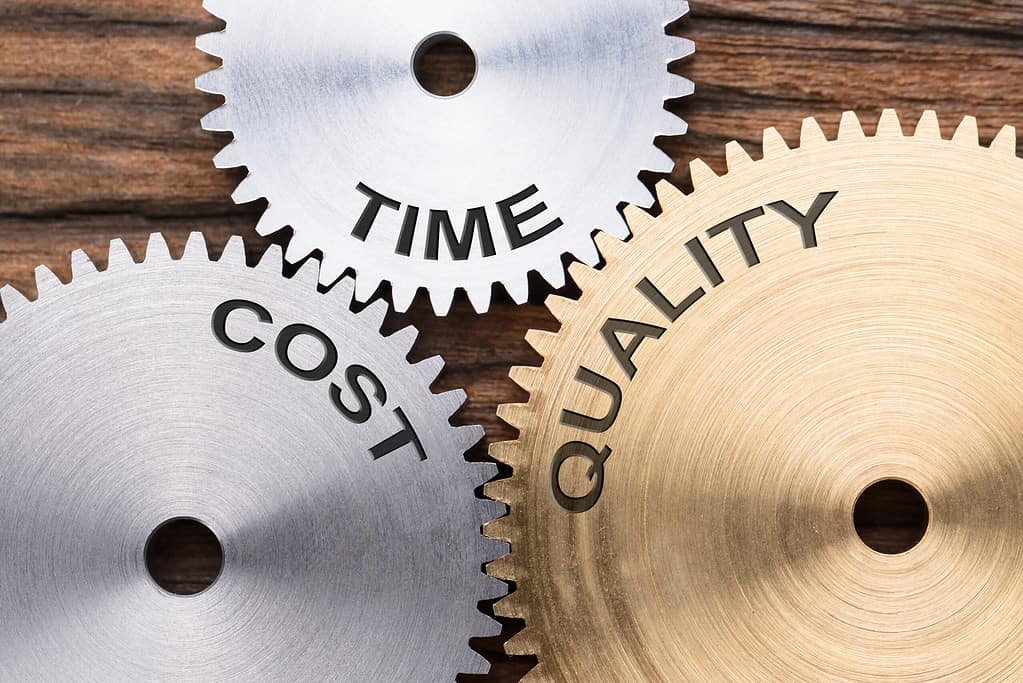Category: Financial Analysis

What is Return on Net Assets? A Complete Guide
Updated:RONA is one bottom-line measurement showing performance relative to strategic goals and objectives.
Read more »
Optimize the Total Costs of Quality
Updated:Don’t let the costs of poor quality eat your profits for breakfast. Learn how to stay competitive by understanding the components of TCOQ and how to optimize them – and ultimately the quality of your product or service.
Read more »
Beyond Cost Savings: Making the Case for 5 Other Financial Benefits of LSS Projects
Published:Although many LSS organizations focus their improvement efforts solely on reducing costs, cost savings are chump change when compared to the revenue implications of delivering an enhanced customer experience. Learn how to quantify – and achieve – five categories of financial benefit beyond cost savings.
Read more »
Reap a Return on Investment
Published:Return on investment (ROI) measures/evaluates an investment. It can be thought of in general terms as: (gain from investment) (cost of investment) / cost of investment The specifics of a calculation will vary depending upon the type of investment being assessed. The best ROI references on iSixSigma can be found at the following links: Ask […]
Read more »
Calculating ROI to Realize Project Value
Published:Businesses are in business to make money. But calculating the true value of any project (Lean Six Sigma or otherwise) with respect to its impact on margin has always been challenging, mainly due to the ambiguity of turning notions into dollar values. For instance, it is clear that training employees will improve expertise and productivity, […]
Read more »
Monitoring Return on Investment for Internet Initiatives
Published:During the past four years the Internet channel has seen the migration from an exploratory revolution of new functionality to creating a viable profitable business. It is no longer feasible to place additional technological enhancements on the web without considering the payback model in which returns and/or cost savings can be generated. This young Internet […]
Read more »
Managing COPQ by Analyzing and Optimizing Thresholds
Published:At the core of Six Sigma lies the continuous drive to reduce the cost of poor quality (COPQ), and it often takes center stage when making the business case for continuous improvement projects. Its components include aspects of operations such as scrap, rework and costly customer returns. In the wake of the current global economic […]
Read more »
Six Sigma Costs and Savings
Published:You can’t expect to significantly reduce costs and increase sales using Six Sigma without investing in training, organizational infrastructure and culture evolution.
Read more »
What Belts Should Know About the Cost of Poor Quality
Published:Of all the activities and tools used in the Measure phase of DMAIC, the thing many Belts struggle with the most is the cost of poor quality (COPQ), or the cost associated with the quality of a work product. Belts need to understand what COPQ includes, and what it does not, so they can determine […]
Read more »
Measuring Six Sigma Financial and Operational Benefits
Published:For Six Sigma to succeed in a financial services organization, the deployment team and the business need to be able to measure the benefit of the projects. This should occur from both a financial and operational effectiveness perspective.
Read more »
Cost of Quality: Not Only Failure Costs
Published:When calculating the business case for a Six Sigma project, the cost of poor quality (COPQ), which is the cost caused through producing defects, is a commonly used concept. Within the total amount of quality cost, however, COPQ represents only a certain proportion. Costs do not result from only producing and fixing failures; a high […]
Read more »
Involve Finance in Project Selection, Not Just Validation
Published:Most companies using Six Sigma have grown used to including financial staff at the back-end of project completion to validate the project results. But the most savvy organizations are learning to get their finance department involved up front, helping to pick what projects to work on in the first place. Here is what can happen […]
Read more »
Green Belt, Black Belt, Now the Six Sigma ‘Money Belt’
Published:In addition to the more familiar Green Belt and Black Belt, some Six Sigma organizations have defined another role – a “Money Belt.” The function of the Money Belt is to provide an independent and objective evaluation of the financial benefits projections and the actual results achieved by Six Sigma projects. Chosen by the chief […]
Read more »
How to Explain Six Sigma by Using the Profit Triangle
Published:Once a person becomes a Master Black Belt or deployment leader within an organization, they may spend a lot of time explaining to other people what Six Sigma is and how it can help the company. They may have to convince many skeptical people, who always see the deployment costs but not the benefits. Two […]
Read more »
Calculating Financial Impact of Lean Six Sigma Projects
Published:CEOs want to know the return on investment of Lean Six Sigma projects, and CFOs want to compare the real financial results to “PowerPoint dollars.” A rigorous approach to calculating an improvement project’s impact is important to every organization.
Read more »
Ask the Expert: The Topic – Six Sigma and Return on Investment
Published:John Lopez-Ona, president and CEO of Six Sigma Qualtec, offers his perspective on Six Sigma and return on investment from how to measure ROI in a Six Sigma initiative to the critical success factors in achieving a satisfactory ROI.
Read more »
Calculating COPQ Using Weighted Risk of Potential Failures
Published:The Cost of Poor Quality (COPQ) – the cost of defects in the current process, product or service – is the initial financial analysis conducted for a Six Sigma project. It is used to justify initiating a project. And, while COPQ does not contribute to the success of any Six Sigma project, it is valuable in prioritizing […]
Read more »
Involving Finance in Six Sigma – Do It Early and Fully
Published:It is common to hear great claims of monetary benefits from various improvement initiatives. But how confident can a company be that those “benefits” – both cost saving and generation of additional revenue – actually impacted the bottom line? BHP Billiton Base Metals considered this question and found an answer through the involvement of its finance department […]
Read more »
Hard and Soft Savings: What Counts Can Be Counted
Published:Six Sigma is all about what can be quantified and measured. So it is not surprising that organizations which utilize Six Sigma often prefer to measure success in terms of hard savings – dollars to the bottom line now – and are less impressed with soft savings – the possibility of dollars to the bottom line in the […]
Read more »